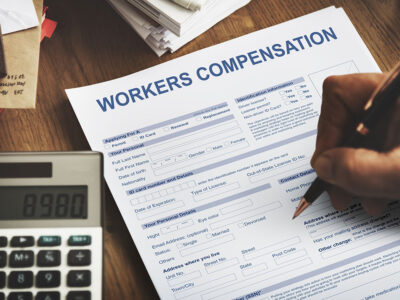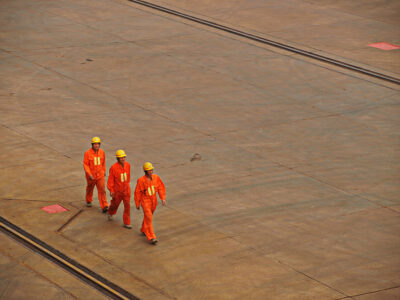Work zones can be deadly, not only for the employees laboring within them but also for unsuspecting drivers passing by. These are more than just temporary roadblocks; they are high-risk environments where heavy machinery, human judgment, and speeding traffic intersect. Despite regulatory efforts and safety mandates at the state level, including in California, the rate of work zone fatalities has not significantly declined over the past two decades. The situation remains a pressing concern across the United States.
Current Fatality Statistics in Work Zones
- In 2023, the BLS reported 5,283 fatal work injuries across all industries, continuing a slight downward trend of 3.7% from 2022, with a fatality rate of 3.5 per 100,000 full-time equivalent workers
- Transportation incidents, including work zone crashes, accounted for 36.8% of those deaths, making them the most common cause of worker fatalities.
- More specifically, 898 people were killed and 40,170 were injured in U.S. work zone crashes in 2023.
These updated figures show that work zones continue to be hazardous, not just for workers but also for drivers and pedestrians, underlining why proactive safety measures are still critically needed.
Dissecting Work Zone Vehicle-Related Incidents
The majority of work zone deaths are vehicle-related, both from within and outside the site. The Center for Construction Training and Research (CPWR) analyzed 267 fatal incidents between 2011 and 2016, revealing two primary types:
Forward-Moving Intrusions from Exterior Vehicles
The most dangerous scenarios often occur when non-work-related vehicles breach the work zone perimeter. These intrusions typically happen due to:
- Distracted or impaired driving
- Speeding through inadequately marked work zones
- Poor visibility and inadequate warning signage
Such breaches accounted for 61.4% of incidents in the CPWR study. These are often catastrophic, as workers have limited reaction time to avoid the incoming threat.
Backover Incidents: A Silent Killer Within the Zone
The second major category, accounting for 24.7% of incidents, involves backovers, where heavy construction equipment, such as dump trucks or bulldozers, strikes workers while reversing. These incidents often occur due to:
- Blind spots in large machinery
- Inadequate use of spotters or signalers
- Operator fatigue or distraction
- Absence of auditory warning systems
How to Prevent Work Zone Fatalities: Comprehensive Safety Measures
While no single action can eliminate all risks, a multifaceted safety protocol can drastically reduce them. Site managers, contractors, and public agencies can implement the following preventive strategies:
High-Visibility Apparel
Ensure all workers are wearing reflective clothing compliant with ANSI/ISEA 107 standards. Proper visibility is often the last line of defense in a fast-moving and chaotic environment.
Automated Flagger Assistance Devices (AFADs)
Instead of assigning workers to control traffic manually, many sites now deploy AFADs. These robotic flaggers reduce human exposure to oncoming vehicles and ensure uniform traffic guidance.
Queue Warning Systems
Queue warning systems are designed to alert approaching drivers of congestion or work zone activity ahead. These real-time notifications allow drivers to reduce speed gradually and avoid sudden braking, which often leads to rear-end collisions.
Use of Spotters and Circle Checks
Designating certain workers as spotters to monitor blind spots and vehicle movements helps prevent accidental contact. Moreover, operators must conduct a “circle check” before operating any machinery to identify potential hazards or mechanical issues.
Safety Tech Integration
Incorporating modern technology such as proximity detection systems, geo-fencing, and real-time GPS tracking for heavy machinery enhances awareness and control, especially in dynamic and congested environments.
Deepening the Context
Let’s break down the core entities involved in this topic and their attributes using the Entity-Attribute-Value (EAV) model:
| Entity | Attributes | Sample Values |
|---|---|---|
| Work Zone | Type, Road Condition, Traffic Flow | Freeway, Night Shift, Urban/High Traffic |
| Construction Equipment | Type, Visibility, Reverse Alarm, Speed Limit | Bulldozer, Audible alert missing, Narrow radius turns |
| Worker | Status, PPE, Role | Contracted laborer, ANSI-compliant vest, Spotter |
| Intruding Vehicle | Type, Driver Behavior, Time of Day | SUV, Distracted, Night-time |
| Legal Right | Status Eligibility, Claim Window, Language Support | Eligible regardless of immigration, 30-day reporting |
Legal Recourse for Injured Workers, Including Immigrants
Even when all safety protocols are followed, accidents still happen. Fortunately, California’s workers’ compensation laws are inclusive and protective, even for undocumented immigrants.
Understanding Legal Protections in California
Under state law, immigration status does not impact your right to workers’ compensation. Workers are entitled to:
- Medical treatment coverage
- Temporary disability benefits
- Permanent disability evaluations
- Vocational rehabilitation
Why You Need Legal Help
Employers and insurance companies often dispute or delay legitimate claims, particularly in high-cost injury cases or where immigration status is involved. A dedicated attorney can:
- Prevent wrongful denials
- Navigate complex paperwork
- Represent you in hearings or appeals
Trust Hussain & Gutierrez Law
Our team has deep expertise in workplace injury law and an unwavering commitment to protecting immigrant workers’ rights. Visit https://hussaingutierrezlaw.com or call us for a free consultation today.
FAQs: Addressing Common Search Queries
What is a work zone intrusion?
A work zone intrusion occurs when a vehicle not associated with the construction site enters the restricted area, posing a high risk of injury or death to workers.
Can undocumented workers receive compensation?
Yes. In California, immigration status does not disqualify a worker from receiving compensation benefits.
What if a third-party driver caused the accident?
You may be able to pursue a personal injury lawsuit against the driver while also filing a workers’ comp claim.
Are employers required to train workers in safety protocols?
Yes. OSHA mandates that employers must provide training and protective equipment, along with maintaining a hazard-free environment.
How soon must I report a work zone injury?
You must report your injury within 30 days to preserve your right to compensation.
Get Help Now
Don’t wait until the system works against you. Injuries and legal rights are time-sensitive.
Contact Hussain & Gutierrez today. We’ll help you understand your options, protect your rights, and fight for your future.



